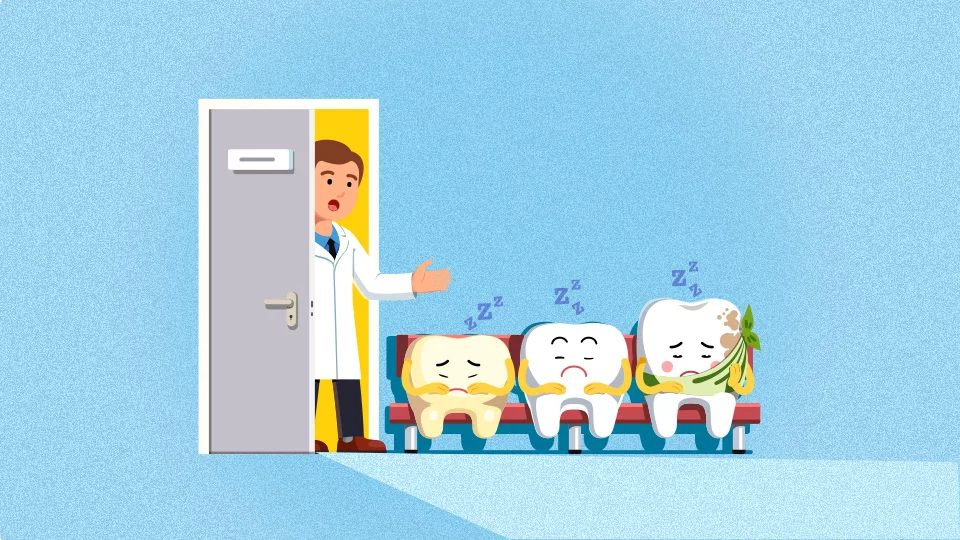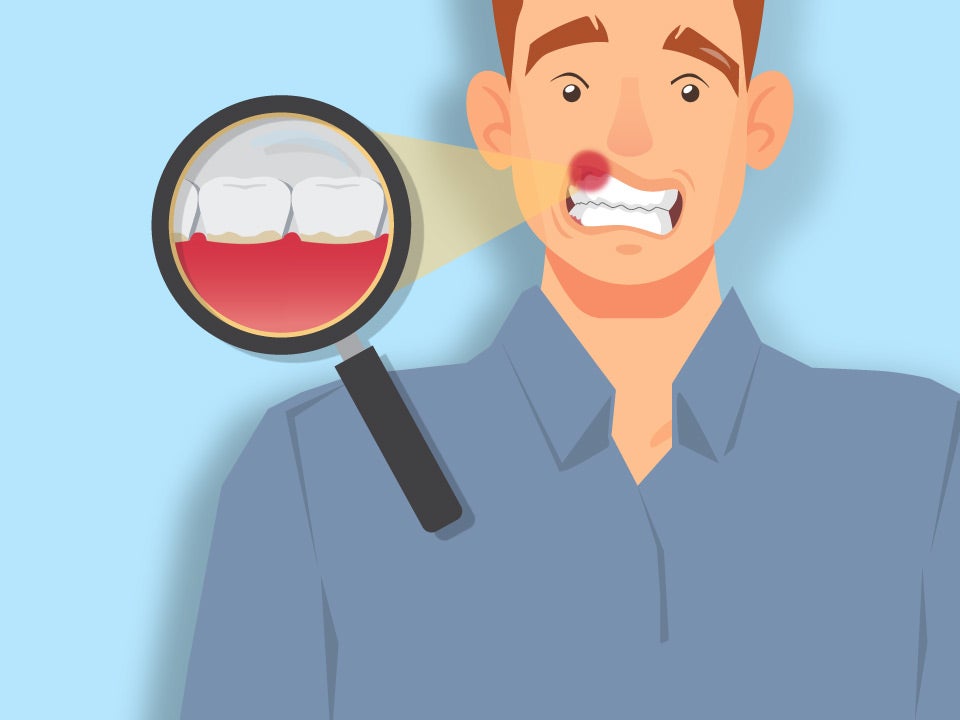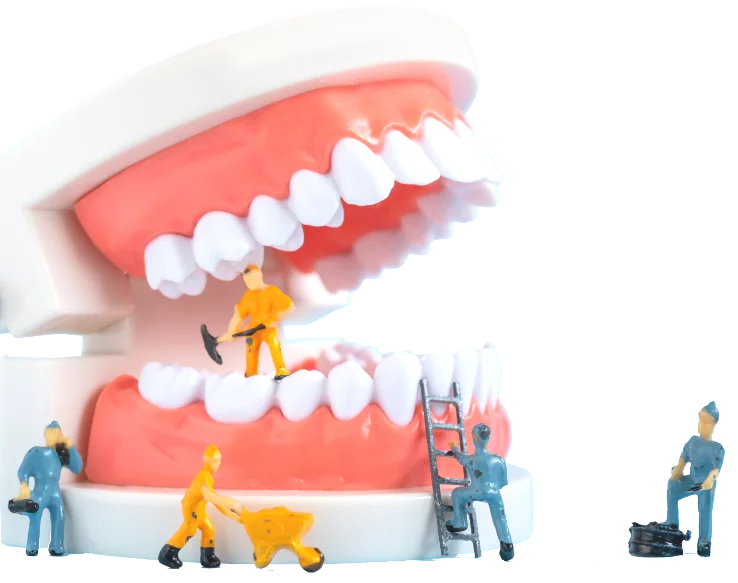Let’s be honest, many of us don’t prioritize oral health the same way we do our overall physical health. This separation is even evident within the current healthcare landscape, where the medical and dental fields are disconnected. Historically, tooth extraction was once a form of entertainment, with barber-surgeons conducting procedures in front of crowds.1 Thankfully, we’ve moved past that era. However, when dentistry became a formal profession in the mid-1800s, it followed a separate educational path – further widening the gap between dental and medical care.2, 3
Briding the Gap Between Dental and Medical Healthcare
Now, more and more reports are emphasizing the crucial need to bridge the gap between dental and medical health care. The U.S. Surgeon General’s Oral Health in America reports from 2000 and 2021 highlighted the importance of integrating these fields.4 This integration is important because oral health plays a significant role in reducing chronic inflammation, which in turn impacts patient’s overall health and quality of life. In fact, the Centers for Disease Control and Prevention (CDC) identifies the leading causes of death in the United States include heart disease, cancer, chronic lower respiratory disease, stroke, Alzheimer’s disease, diabetes, kidney disease, and pneumonia.5 Surprisingly, many of these conditions have been linked to inflammation, bacteria, enzymes in the mouth.
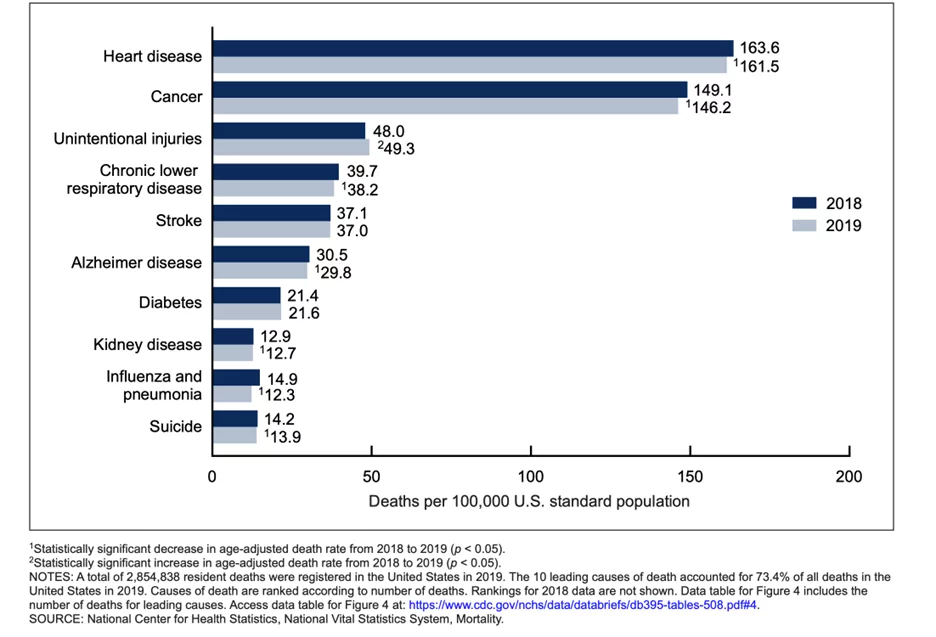
And get this–five of them are linked to sleep-related breathing disorders, including untreated obstructive sleep apnea (OSA).6 Therefore, integrating dental and medical care is essential for collaborative efforts to address chronic inflammation and keep your body’s stress response in check. The image below indicates the effects of oral pathogens on overall health7, 8
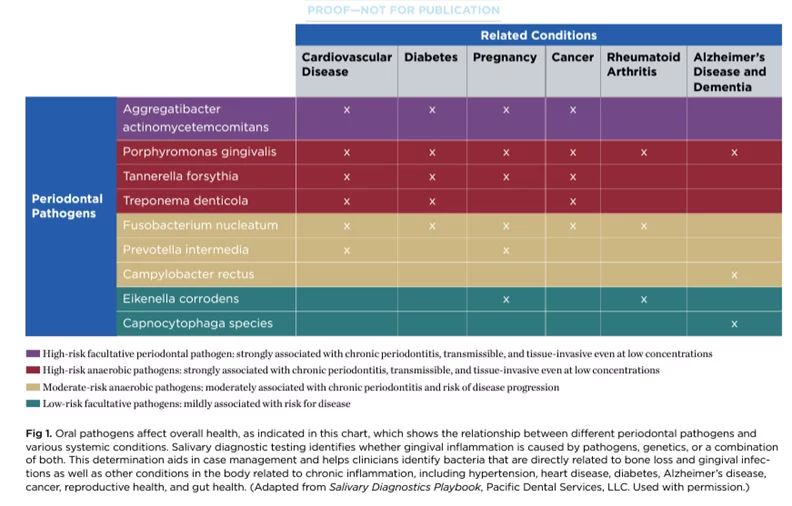
Dentists as Key Players in Whole-Body Health
Dentistry isn’t just about drilling and filling anymore. As technology advances, dentists are becoming key players in a whole-body health model. They’re not only looking after your smile but also spotting early signs of chronic inflammation that could affect your overall health.
Imagine every dental visit includes a thorough check-up: oral exam, medical history review, oral cancer screening, saliva testing, 3D X-rays, and even home sleep apnea testing. With these detailed test results, the dentist can create individualized treatment plans based on solid data and collaborate with your medical providers to enhance your overall health and well-being.
Addressing Sleep-Related Issues
Now, let’s talk about sleep. Dentists are stepping up to the plate in identifying patients with untreated or undiagnosed OSA. By examining your mouth and medical history, they can spot signs like bruxism (tooth grinding), crowded teeth, a scalloped tongue, large tonsils, and variations in nasal anatomy. This proactive approach helps catch OSA early, cutting down its 80% undiagnosed rate.9
Why Sleep Matters for Your Health
Why does this matter? Because routine sleep screenings during dental exams could literally add years to our life! Untreated mild to moderate sleep apnea isn’t about loud snoring, it can decrease life expectancy by 10 to 15 years – and untreated severe sleep apnea can ultimately be fatal.10 The correlation between untreated OSA and early mortality stems from breathing pauses that trigger the body’s stress response, disrupting sleep and exacerbating other health issues like heart disease, diabetes, and hypertension.
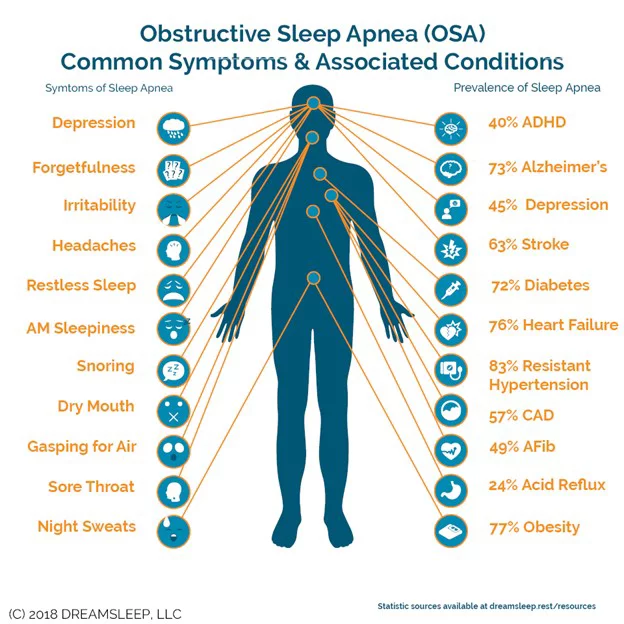
Exploring Oral Appliance Therapy
Patients diagnosed with mild to moderate OSA, or those intolerant to continuous positive airway pressure (CPAP) machines, have other treatment alternatives available. Physicians can prescribe oral appliance therapy (OAT), and dentists with specialized training can administer oral appliances and ensure their effectiveness through follow-up care. Fun fact: While only 50% of patients stick with CPAP therapy,11 a whopping 90% stay on track with OAT after five years.12 Who knew seeing your dentist can be such a game-changer?
Thanks to advancements in dental technology and diagnostics, the once-wide gap between oral and overall health is narrowing. These improvements have highlighted the key role inflammation plays in major diseases.13 Inflammation from periodontal pathogens (the bad bacteria causing gum disease), cavities, and untreated OSA contribute to serious conditions like heart attacks, stroke, and diabetes.14 Screening for issues like diabetes and high blood pressure during dental visits could save the U.S. healthcare system up to $100 million annually.15
Today’s dentists play a vital role in identifying and treating inflammatory disease and OSA. They’re not just the doctors who ask you to say, “Ahh,” they’re essential members of our healthcare team, educating you about the risks of untreated inflammation and guiding you toward necessary interventions. By doing so, they’re improving community health, cutting healthcare costs, and enhancing our quality of life.
Learn More About Your Health
For more resources on the Mouth-Body Connection®, visit smilegeneration.com. If you’re interested in learning more about sleep health and oral appliance therapy, check out Dynamic Dental Sleep. These additional resources provide valuable information to help you take the next steps in your oral and overall health journey.
Find your trusted, local dentist today!
Sources
Fee E, Brown TM, Lazarus J, Theerman P. The tooth puller [L’arracheur de dents]. Am J Public Health. 2002;92(1):35.
University of Maryland, Baltimore. Dental School, Baltimore College of Dental Surgery. The Baltimore College of Dental Surgery: Heritage and History. 1981. http://archive.hshsl.umaryland.edu/bitstream/10713/27/1/bcds_heritage.pdf. Accessed February 21, 2024.
Simon L. Overcoming historical separation between oral and general health care: interprofessional collaboration for promoting health equity. AMA J Ethics. 2016;18(9):941-949.
National Institutes of Health. Oral Health in America: Advances and Challenges. Bethesda, MD: US Dept of Health and Human Services, National Institutes of Health, National Institute of Dental and Craniofacial Research; 2021.
Kochanek KD, Xu J, Arias E. Mortality in the United States, 2019. NCHS Data Brief. 2020;395:1-8.
Knauert M, Naik S, Gillespie MB, Kryger M. Clinical consequences and economic costs of untreated obstructive sleep apnea syndrome. World J Otorhinolaryngol Head Neck Surg. 2015;1(1):17-27.
Hidden Health Crisis Costing America Billions: Underdiagnosing and Undertreating Obstructive Sleep Apnea Draining Healthcare System. Frost & Sullivan; 2016. https://aasm.org/resources/pdf/sleep-apnea-economic-crisis.pdf. Accessed February 8, 2024.
Salivary Diagnostics Playbook: Association of Pathogens and Related Systemic Conditions. Pacific Dental Services, OralDNA Labs. 2021:3.
American Academy of Sleep Medicine. Hidden Health Crisis Costing America Billions: Underdiagnosing and Undertreating Obstructive Sleep Apnea Draining Healthcare System. Mountain View, CA: Frost & Sullivan; 2016. https://aasm.org/resources/pdf/sleep-apnea-economic-crisis.pdf. Accessed February 21, 2024.
Pai V. How untreated sleep apnea impacts life expectancy. The CPAP Shop website. March 8, 2023. https://www.thecpapshop.com/blog/untreated-sleep-apnea-life-expectancy/. Accessed February 21, 2024.
Wolkove N, Baltzan M, Kamel H, et al. Long-term compliance with continuous positive airway pressure in patients with obstructive sleep apnea. Can Respir J. 2008;15(7):365-369.
de Almeida FR, Lowe AA, Tsuiki S, et al. Long-term compliance and side effects of oral appliances used for the treatment of snoring and obstructive sleep apnea syndrome. J Clin Sleep Med. 2005;1(2):143-152.
Furman D, Campisi J, Verdin E, et al. Chronic inflammation in the etiology of disease across the life span. Nat Med. 2019;25(12):1822-1832.
Bale B, Doneen A, Collier Cool L. Beat the Heart Attack Gene: The Revolutionary Plan to Prevent Heart Disease, Stroke, and Diabetes. New York, NY: Wiley; 2014.
Nasseh K, Greenberg B, Vujicic M, Glick M. The effect of chairside chronic disease screenings by oral health professionals on health care costs. Am J Public Health. 2014;104(4):744-750.
Smile Generation blog articles are reviewed by a licensed dental professional before publishing. However, we present this information for educational purposes only with the intent to promote readers’ understanding of oral health and oral healthcare treatment options and technology. We do not intend for our blog content to substitute for professional dental care and clinical advice, diagnosis, or treatment planning provided by a licensed dental professional. Smile Generation always recommends seeking the advice of a dentist, physician, or other licensed healthcare professional for a dental or medical condition or treatment.


